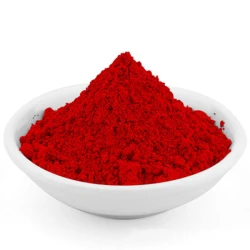Here's an overview of liquid colorants and pigment dispersions
2024-03-22
Liquid colorants and pigment dispersions are additives used in various industries, including paints and coatings, plastics, inks, textiles, and cosmetics, to impart color to products. These additives are available in liquid form and contain concentrated pigments or dyes dispersed in a carrier fluid. Here's an overview of liquid colorants and pigment dispersions, their characteristics, and applications:
Liquid Colorants:
1. Composition: Liquid colorants are formulations consisting of pigments or dyes dispersed in a carrier liquid, such as water, solvent, oil, or resin. The carrier fluid serves to disperse and transport the colorant to the desired application.
2. Types of Colorants:
- Pigment-based: Pigment-based liquid colorants contain finely ground solid particles dispersed in a carrier fluid. They offer excellent color strength, opacity, and lightfastness, making them suitable for applications requiring vibrant and durable colors.
- Dye-based: Dye-based liquid colorants contain soluble colorants dissolved in a carrier fluid. They provide intense and transparent colors but may have lower lightfastness and chemical resistance compared to pigment-based colorants.
3. Color Range: Liquid colorants are available in a wide range of colors, shades, and hues, allowing for customization and precise color matching to meet specific customer requirements.
4. Application Methods: Liquid colorants can be applied using various methods, including mixing into base materials (e.g., paints, plastics, inks), spraying, dipping, or brushing onto surfaces.
5. Compatibility: Liquid colorants are compatible with a variety of base materials, including water-based and solvent-based systems, thermoplastics, thermosets, and aqueous dispersions.
6. Advantages:
- Ease of incorporation into formulations
- Consistent color reproducibility
- Versatility in application methods
- Enhanced color uniformity and dispersion
7. Applications: Liquid colorants are used in a wide range of applications, including:
- Paints and coatings
- Plastics and polymers
- Inks and printing
- Textiles and fibers
- Cosmetics and personal care products
Pigment Dispersions:
1. Composition: Pigment dispersions are concentrated suspensions of pigments in a liquid carrier, such as water, solvent, or resin. They contain finely milled pigment particles dispersed homogeneously throughout the carrier fluid.
2. Particle Size: Pigment dispersions typically have controlled particle sizes to ensure uniform dispersion and color consistency in the final product.
3. Stability: Pigment dispersions are formulated to provide stability against settling, flocculation, and agglomeration, ensuring long-term shelf stability and ease of handling.
4. Types of Dispersions:
- Aqueous Dispersions: Water-based pigment dispersions are environmentally friendly and suitable for water-based coatings, paints, and inks.
- Solvent Dispersions: Solvent-based pigment dispersions are compatible with solvent-based systems and are often used in industrial coatings, automotive finishes, and specialty inks.
- Resin Dispersions: Pigment dispersions in resin carriers are used in thermosetting systems, adhesives, and specialty coatings.
5. Application Methods: Pigment dispersions can be added directly to base materials or formulations during manufacturing processes, such as mixing, extrusion, or compounding.
6. Advantages:
- High pigment loading for intense coloration
- Excellent color consistency and reproducibility
- Enhanced dispersion and stability
- Compatibility with various resin systems
7. Applications: Pigment dispersions are used in a wide range of applications, including:
- Paints, coatings, and varnishes
- Printing inks and toners
- Plastics and polymer compounds
- Adhesives and sealants
- Textile printing and dyeing
Overall, liquid colorants and pigment dispersions offer versatile solutions for coloring and enhancing the aesthetic properties of various products across different industries. Their customizable formulations, ease of incorporation, and compatibility with diverse substrates make them essential additives for achieving desired colors, effects, and performance characteristics in end-use applications.



